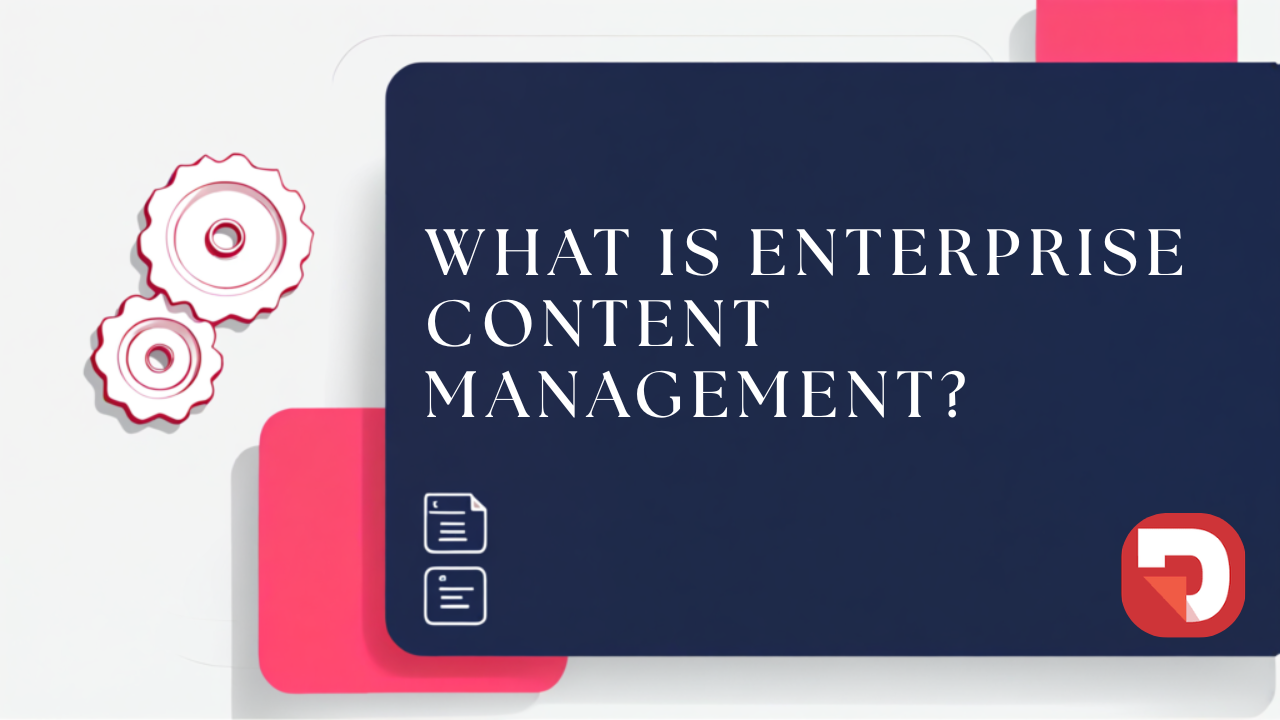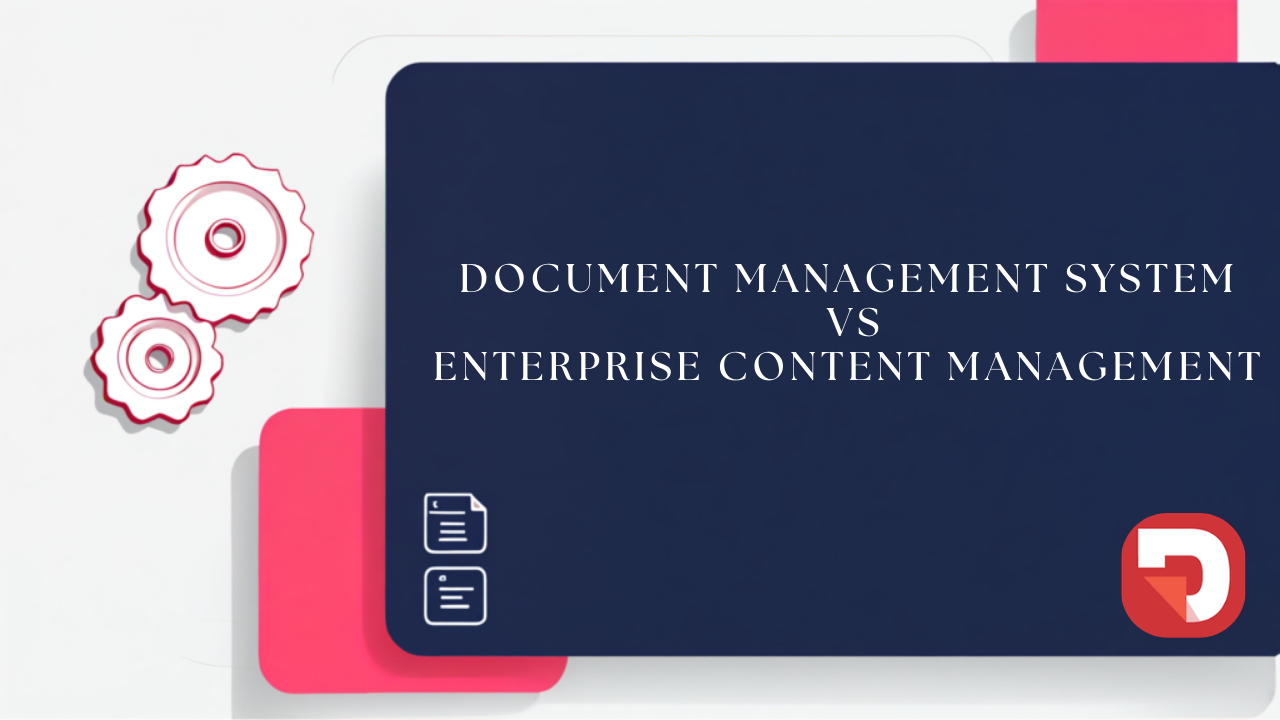
What is Enterprise Content Management? Guide to ECM

DMS and ECM hold many common features, however, they are not the same.
If you’re not sure which one is the best fit for you and your business, we’ve got you covered.
In this article, we’ll analyze DMS vs ECM side by side.
A DMS is a software designed to store, manage, and organize all of your digital documents. This can be scanned documents, contracts, proposals, presentations…
Your documents are organized and stored in digital file cabinets. This can be done on the cloud or on your own servers.
With your DMS you are able to organize your documents effectively and share them with those involved.
A DMS typically includes features such as:
Document management systems allow you to create customized workflows that automate every process such as creation, review, approval, and archiving, among others.
An ECM is also a tool used to manage documents through their entire lifecycle. ECM is a set of technologies used by larger enterprises to capture, manage, store, preserve, and deliver content and documents.
Enterprise content management controls more than just documents, it manages all content involved in an organization. This includes scanned documents, PDFs, contracts, proposals, but also images, videos, emails, web content, and records.
ECMs integrate AI to manage content across the entire organization, offering intelligent classification, semantic search using natural language processing (NLP), content analytics for compliance and risk detection, and predictive insights to support decision-making.
It enhances workflows by dynamically routing content and automating lifecycle management based on contextual understanding.
Some ECM features include:
The goal of ECM is to improve efficiency, compliance, and collaboration by providing a unified platform that supports content creation, version control, secure access, workflow automation, and records management.
In the first place, DMS and ECM have one equal base: to store and manage your documents.
Both tools have digital file cabinets to store your documents organized with advanced indexing and metadata tagging .
However, there are more similarities between both tools. For example:
As mentioned, both tools aim to store all of your business’ document in digital file cabinets.
With an ECM and a DMS you can easily access and retrieve any document quickly with advanced searching, indexing, and metadata tagging
With an ECM and a DMS you can create customized and automated routes for your documents.
They support automated workflows for document review, approval, and routing to streamline business processes.
Both systems allow you to track all changes that a document has gone through. Additionally, with both systems you can access the most recent and updated version of your document.
With ECM and DMS you can assign roles and permissions to every document to reduce the risk of security breeches.
Permissions allow you to define who can view, edit, email, or print any of your documents.
They help organizations meet regulatory requirements by providing audit logs and records management features.
With a DMS and an ECM you can see who and when accessed every document.
The major benefit of using a DMS or an ECM is being able to work closely with the rest of your team.
Every member will have access to the most recent any time they need to open the document, therefore, reducing back and forth between copies and lost documents.
Although DMS and ECM do share many common features and goals, there are some significant differences too.
A DMS is primarily focused on the management of documents like Word files, PDFs, and spreadsheets, offering tools such as version control, access permissions, and basic workflow routing.
It is ideal for departments or small businesses that need structured document handling without the complexity of enterprise-wide content operations.
On the other hand, ECM holds a much broader content ecosystem.
It includes all of a DMS’ features, but also manages unstructured data types such as emails, videos, web content, and scanned images.
Additionally, it offers many more integrations with systems such as ERP and CRM, allowing you to speed businesses processes.
ECMs automate lifecycle management and enforce governance policies.
ECM solutions also provide advanced capabilities such as digital asset management and case management, making them suitable for large, regulated industries like governments, manufacturing, healthcare, and finance.
Regarding scalability, DMS solutions work well for isolated document use cases, while ECM is built to handle a much larger volume of content.
Essentially, a DMS can be considered a subset or building block of a larger ECM strategy, useful for tactical needs but limited in scope when compared to the enterprise-wide governance that ECM enables.
| Feature | DMS | ECM |
|---|---|---|
| Scope | Document storage and management | Enterprise-wide content management |
| Content | Text documents (Word, PDF, Excel) | Documents, multimedia, web content, emails |
| Functionality | Versioning, access control, search | Includes DMS features + DAM, case mgmt, WCM |
| Compliance | Basic document-level security | Full governance, retention, and legal holds |
| Integration | Limited (e.g., file systems) | Deep integration with ERP, CRM, HRM tools |
| Scalability | Departmental or small business use | Enterprise-wide, high-volume scalability |
| AI | Limited OCR, tagging | AI-driven classification, analytics, NLP |
Choosing the right tool for your business is crucial, but how can you decide?
A DMS is the right choice for small to medium-sized businesses or departments that need a cost-effective solution to securely store, organize, and retrieve documents.
It’s ideal when the focus is primarily on managing files like contracts, invoices, and reports without the need for deep integrations or enterprise-wide governance.
On the other hand, an ECM is best suited for larger organizations or those in heavily regulated industries, such as healthcare, finance, or legal, that deal with a wider variety content types across different departments.
If your business needs to automate complex workflows, enforce strict compliance policies, integrate with core enterprise systems (like ERP or CRM), and manage content throughout its lifecycle, an ECM offers the strategic foundation to support those goals.
| DMS | ECM |
|---|---|
| Small to medium-sized business | Larger organizations |
| Managing contracts, invoices, and reports | Varied content, automated complex workflows, powerful integrations |
| Less scalable | More scalable |
If you’re ready to try a powerful ECM, why not give Dokmee a go today?